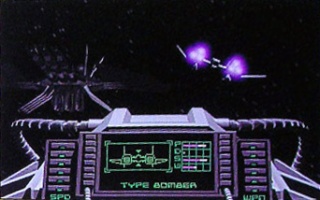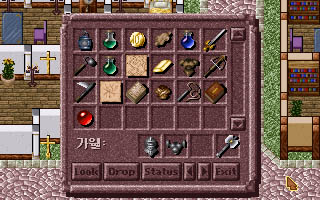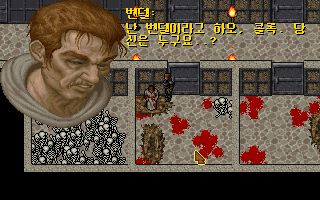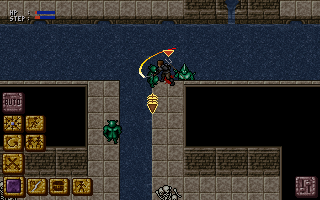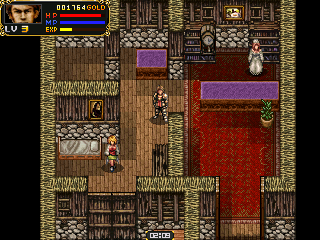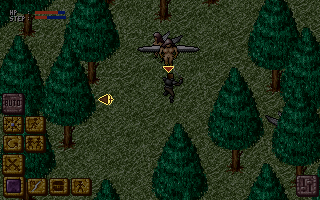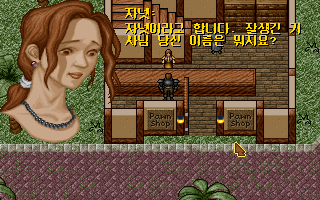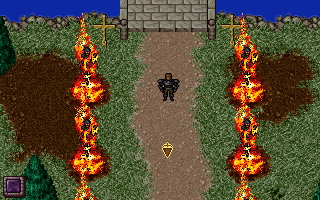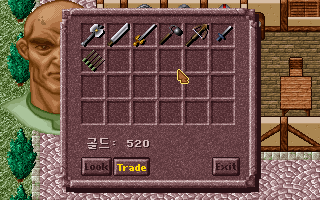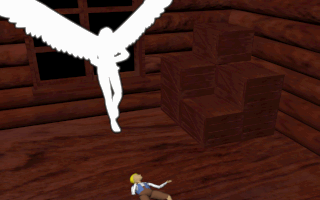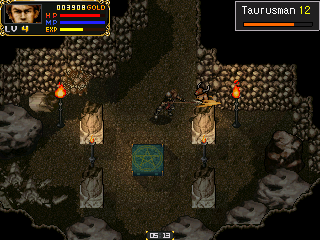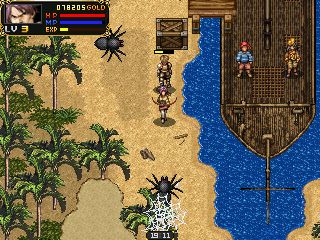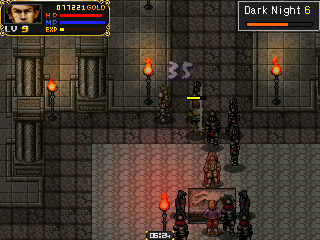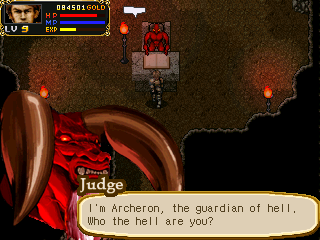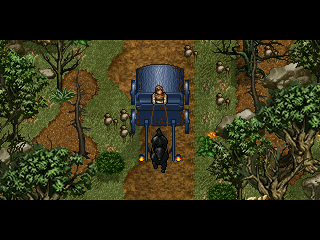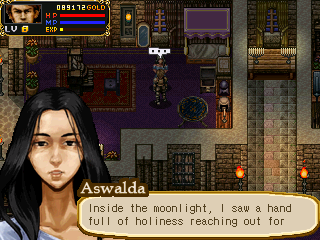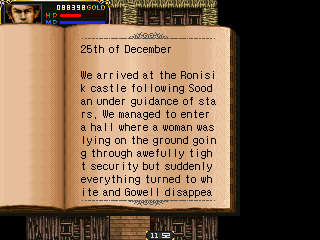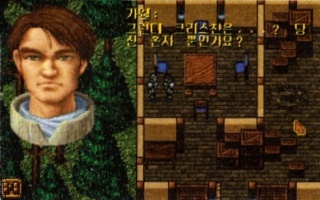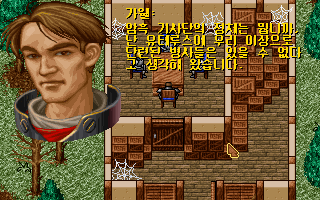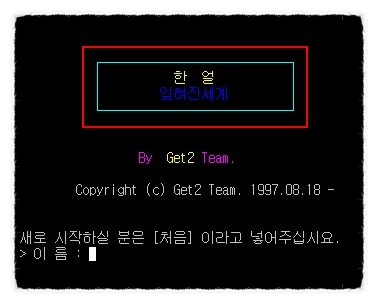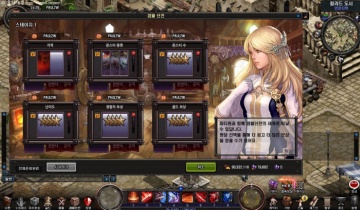A History of Korean Gaming
엑스터시 엔터테인먼트 Ecstasy Entertainment

|
Founded: |
Team: 1992 |
|
Status: |
defunct (around 1998) |
|
Key People: |
남인환 Nam Inhwan: |
|
Website: |
none |
디지털 임팩트 Digital Impact

|
Founded: |
March 1993 |
|
Status: |
renamed to EnterOne (2001) |
|
Key People: |
崔容成 최용성 Choe Yongseong: |
|
Website: |
www.impact.co.kr (offline) |
사이오넥스 Cyonex

|
Founded: |
November 1999 |
|
Status: |
defunct |
|
Key People: |
김성배 Kim Seongbae: |
|
Website: |
www.cyonex.com (offline) |
이온소프트 Aeonsoft

|
Founded: |
May 4, 2002 |
|
Status: |
fusioned with nFlavor (2010) |
|
Key People: |
김광열 Kim Gwangyeol: |
|
Website: |
www.aeonsoft.co.kr |
플레이웍스 PlayWorks

|
Founded: |
April 2010 |
|
Status: |
active |
|
Key People: |
김광열 Andy Kim Gwangyeol: |
|
Website: |
There's one important factor shared by these otherwise mostly unrelated companies: All were home to programmer and game designer Nam Inhwan, who was now established as the forefather of Korean game developers and served as a figurehead for them.
Ecstasy started out as a small independent team of developers, still writing its name X'tasy. But as development of their games dragged on, the team came into financial difficulties and even had to give up its office space for a while. Finally, they found funding through the computer hard- and software distributor Mansang and became more or less its subsidiary1. Eventually Ecstasy was established as its own company, although it didn't last for very long: The last sign of activity came in summer 1998, when the company announced it would be developing the dating simulation Love Maker in cooperation with a Japanese "company A."2 By that time Nam Inhwan had already left Ecstasy Entertainment, though.
Digital Impact was more of a general multimedia company, that had already about 120 employees by 19973. It first made the news by co-publishing a bunch of softerotic multimedia DVD-roms4. Later Digital Impact obviously trieed to polish up its reputation, as those were later omitted from the company history in favor of mentioning education titles. In 1996 it was also publicity-effectively announced that the former model Choe Igyeong now worked as a web designer for Digital Impact5. Although the company had previously published the Multi User Dungeon Dragon Land, later Digital Impact's game branch was made up entirely of his Nora Team and focused on action RPGs, although the company had previously been a member of the Samsung Game Software Group. His big project of that period, howewever, the planned third part of the Sin'geom-ui Jeonseol series dubbed Arcane, became a victim of Digital Impact's economic situation6. The company eventually recovered, became listed at KOSDAQ as the first company involved in the game business in July 1997. In April 2001, the company was renamed to EnterOne, started to concentrate on the movie sector and became one of Korea's most prominent movie DVD publishing labels for years. The company's fate becan to turn again, though, and after several name changes (Paxmedu in 2008, Sunny Trend in 2009) it seems not much is left of it today7.
Nam, in the meantime, completed an MMORPG that shared the same title and resources with his cancelled single player RPG at Cyonex. Afterwards he co-founded Aeonsoft with his fellow alumnus Kim Gwangyeol, where he created FLYFF, one of Korea's more unique free-to-play MMO's. In early 2006 the Japanese IT company Gala bought Aeonsoft8. When Aeonsoft was fusioned with nFlavor and renamed to Gala Lab, both Nam Inhwan and Kim Gwangyeol left the company and announced plans to form a new enterprise and develop a Sin'geom-ui Jeonseol Online9.
The duo's new enterprise was FantasyWorks (soon renamed to PlayWors). It started out as a subsidiary to Do It Intermedia, but eventually fusioned with its mother company under the name PlayWorks10.
Games
신검의 전설 (Sin'geom-ui Jeonseol) - APPLE ][ (October 1987)
Nam Inhwan programmed his first game — and the first Korean RPG overall — during his high school days, but due to disappointing sales gave up game developing until 1992, when the scene was brought to life by Soft Action, Mirinae and Makkoya11.
Sin'geom-ui Jeonseol was published through Aproman and is introduced at their company profile.
Quick Info:
|
Publisher: |
Aproman |
|
Designer: |
Nam Inhwan |
|
Genre: |
RPG |
Take Back (테이크백) / 탈환 (Talhwan) - IBM PC (December 16, 1994)
Cover
When looking at Ecstasy's early history, one cannot help but think they tried to become the Korean Origin Systems. While the team lead by the Ultima-loving Nam Inhwan was still working on the sequel to his first RPG, another delivered a space combat simulator very similar to Wing Commander, with the same mixture of dogfights and space opera cut scenes.
Take Back reportedly sold 6,000 copies within its first two months, and was also published in Taiwan12. Ecstasy also started work on a sequel using real time polygonal graphics.
LIAR: 신검의 전설 II (Sin'geom-ui Jeonseol II) / Liar: Legend of the Sword II / Redemption: Liar - IBM PC (September 1995), GP2X Wiz (April 22, 2010)
Only 8 years after the first Sin'geom-ui Jeonseol was released, Nam finally got around to making the sequel he announced back in 1987. The scenario is much darker and more elaborate this time: After an introductionary cut scene showing a mysterious cult performing a ritual that involves a newborn baby, the game puts players in the shoes of Garwell, member of a formerly glory knight order that is now persecuted as heretics for denouncing the god Liar. He meets up with the only three other surviving members of the order to plot a coup, but the band is surprised and all are either killed or arrested. As the only survivor, Garwell has to escape the prison and restore the reputation of his former order and prevent the birth of the demon god.
Given Nam's history and the looks of the game, it's easy to assume Liar being a copy of Ultima VII, given the similar looks and the plot about a demon-worshipping religion, but the gameplay is much more streamlined and action-oriented, although still controlled by mouseclicks and menus, wich consist of several more or less independent icons that can be placed everywhere on the screen according to the player's preferences. Garwell can assemble a party of up to five members during the course of the game, but the player only assumes control over one at a time in the rather hectic real time battles and can switch around between them. Foes are attacked by simply clicking on them, leaving little room for tactical play other than the use of spells and of course retreat, the latter of which can be tricky to pull off with a full party.
Liar features a sizeable world map and non-linear progression, interesting sidequests and characters, but the combat is its major problem: It is much too hard. That is, not even challenging, it's just the overwhelming odds that are against the player at the beginning. Every single minion enemy takes and deals more damage than Garwell, hit detection is randomized. Thankfully, the characters' health regenerates automatically over time, making the combat less frustrating but more boring, as now most of the time is spent waiting for the health bar to recharge. Only after hours of grinding the balance becomes somewhat fair.
In 2009 Bitmage, a company specializing in handheld and mobile development, was contracted by Gamepark Holdings to produce a remake of the game for their GP2X Wiz handheld. Graphics and sound were completely redone and the interface streamlined further. The seamless world map of the original has been broken down into seperate sections, many peaceful areas got stocked up with new enemies. Characters are now controlled directly and success in combat is based more on player skill, which, though still simplistic, makes the grinding much less aggravating. Story, quests and dialogues remain the same, but the remake introduces convenient, nowadays obligatory tools to help players getting by, like a quest log and an automap feature. On the downside, the game also suffers of some weird technical issues on the Wiz. Choppy scrolling really shouldn't exist anymore in 2010, but worse is the lack of diagonal movement, which even the original was capable of.
While the original game only made it as far as Taiwan with a localization into Chinese, the Wiz version was officially translated into English, or rather Engrish, to be precise. The script reeks of false grammar and awkward expressions, line breaks are all over the place without regard for spaces or even syllable ends, and even a few leftover Han'geul characters can be spotted here and there. At least it is possible to understand the story this way—to a degree. Players of the English version will find themselves puzzling about the meaning of cryptic quest descriptions more than once.
Before the complete redrawing of the graphics in the Wiz version, even before the game was first released, Ecstasy completely changed the character portraits at least two times, and many graphic tiles where replaced, as well. Besides the changes seen in the comparison below, there has been yet another complete set of character portraits, drawn in a more gritty style, and also accompanying illustrations.
Quick Info:
|
Developer: |
Ecstasy (IBM PC) |
|
Publisher: |
LG Software (IBM PC) |
|
Designer: |
Nam Inhwan |
|
Genre: |
Action-RPG |
|
Theme: |
Fantasy |
Liar: Legend of the Sword II (IBM PC)
Liar: Legend of the Sword II (IBM PC)
Liar: Legend of the Sword II (IBM PC)
Liar: Legend of the Sword II (IBM PC)
Redemption: Liar (GP2X Wiz)
Redemption: Liar (GP2X Wiz)
Comparison Screenshots
신혼일기 (Sinhon Ilgi) / Newly Weds - Windows (1997)
Advertisement
After Nam Inhwan left the company, Ecstasy started to follow entirely different influences. A team under the direction of company president Jeong Jaeuk (who also lead the development of Take Back) now developed an education/career simulation similar to Princess Maker, but with an entirely different theme set in modern times. The protagonist just met & married his wife in a coupling TV show, which starts the game to introduce the five possible spouses and to determine the perfect couplings through a series of questions & answers.
Now it's time to plan the wife's career — the husband is not only there to provide the main income, buy household goods or presents for his wife, he also govern's her entire schedule, from evening school classes to part-time jobs. Questions of what an archaic, patriarchal society the game depicts or why there's not a single thought spend on the man's career have to wait for later. For know, there's enough stats to take care of just for the wife. Certain minimum values in strength, knowledge and beauty have to be attained to apply for new jobs, all the while taking care she doesn't get frustrated, spoiled or sick. The couple should go out every weekend for her to relieve stress, re-buy the appliances that break down every few months and several other activities. Newly Weds offers a higher-than-average amount of different events for the genre, be it sports contests or random encounters with fortunetellers. The player can also leave the house alone in order to hang around bars and other immoral estalishments.
Despite all those different attractions, the game gets very repetitive during the course of the three years. Several elements are implemented rather unloving, too. The wife can get pregnant and have kids, for example, but one never gets to see more of one's offspring than a number in a menu.
The illustrations are mostly well-drawn, only some backgrounds look rushed. The SD sequences are funny, but after looking at them for the 100st time, they really get old. A little more variety for the animations wouldn't have hurt at all.
There is a number of "sexy" drawings for each of the girls, but obligatory for a game legally released in Korea, it all remains very tame. Ecstasy also localized the game for a release in Japan, though (the Japanese title and publisher are not known, assuming that it was released over there at all), and prepared a few exclusive nude illustrations that couldn't be included with the Korean version due to censorship.
한얼: 잊혀진 세계 (Han'eol: Itchyeojin Segye) - DOS (August 18, 1997)
It's not entirely clear to what degree Ecstasy was involved with the development of Han'eol. The MUD was originally announced by the company, but in-game screens only show copyright info for a team called Get2 Team, which might or might not have been an internal team at Ecstasy. Han'eol was unavailable for many years, but someone revived it in August 2010 at hanul.mudnet.kr (it's down again, now).
Han'eol (DOS)
Quick Info:
|
Developer: |
Get2 Team |
|
Publisher: |
Ecstasy? |
|
Genre: |
MUD |
에일리언 슬레이어 (Alien Slayer) / 사이버 먹스 (Cybermercs) - Windows (July 1998)
After the all-encompassing mark Diablo left on the genre, Nam Inhwan developed this Sci-Fi action RPG, which followed a similar formula with its isometric perspective and a focus on looting and network play. In place of randomly generated dungeons, however, stands a number of separate fixed missions, while the town was even more rationalized to mere menus for buying and selling items.
The game couldn't rely on the same hunting & collecting mania as Blizzard's hit, though, as the visual representation of equipment was limited to a few general armor classes (maybe comparable in this respect to Fallout). The variety of weapons and armor was much smaller too, but the system introduced bio augmentations instead, which greatly influence a character's stats. There are four character prototypes to choose from, but they merely affect the beginning stats, with no special skills for each character.
In September 1999, the game was upgraded and re-released as Cybermercs, adding several features and improved multiplayer options. This version was also released in the West by Lomax Software.
아케인 (Arcane) - Windows (January 2001 [open beta], May 2001)
Artwork
Following the short SF interlude with Alien Slayer, Nam began work on the would-be third game in his Sin'geom-ui Jeonseol series, Arcane. While the game was still in development, an MMORPG using the same title and assets was started, too. The single player game was cancelled due to a difficult financial situation at Digital Impact, however the online version was indeed finished and available through Cyonex.
Just like former games of Nam Inhwan were indebted to the Ultima series, Arcane had a very similar outlook to Ultima Online. The game was subject of the highest attention in Summer 2001, during an event where Michael Jackson, investor in Cyonex, finally (after several delayed announcements) logged in to the game for one hour, completely with a sprite that actually looked like him13.
Servers for Arcane have been shut down in July 200414.
Michael Jackson's appearance in Arcane
프리프 (Flyff): Fly For Fun - Windows (January 16, 2004)
Flyff would be your average fantasy grindfest, if it wasn't for the fact that higher level characters take to the sky and thereafter get around the world by flying. Flyff is one of the most successful free-to-play MMOs from Korea and has been localized into 10 different languages.
It's also notable for its music by the freelance team soundTeMP (Astrocounter of Crescents, Ragnarok Online, Granado Espada).
Quick Info:
|
Developer: |
Aeonsoft |
|
Director: |
Nam Inhwan |
|
Genre: |
MMORPG |
|
Theme: |
Fantasy: Comical |
Unreleased Titles Ecstasy Entertainment:
Take Back II: Escape from Storm (테이크백 II) (1995-1996)
도지산 검지림 (Dojisan Geomjirim) (1995-1996)
Midas (1996)
Project Z (1997)
Love Maker (1998)
Unreleased Titles Digital Impact:
Rustria (1997)
Arcane single player (1999-2000)
References
1. Game World 9/1994, supplement
2. ET News 7/9/1998
3. Dong-A Ilbo 6/16/1997, page 19
4. Kyunghyang Shinmun 12/2/1994, page 25
5. Kyunghyang Shinmun 9/2/1996, page 29
6. Mini Today News 6/29/2000
7. Saramin - Sunny Trend Company Profile
8. http://aquijj.egloos.com/1177742
9. Kyunghyang Games
10. PlayWorks Company History
11. PC Champ 2/1996, page 248
12. ET News 28/9/1994
13. Game Meca
14. Gameshot 3/25/2004






